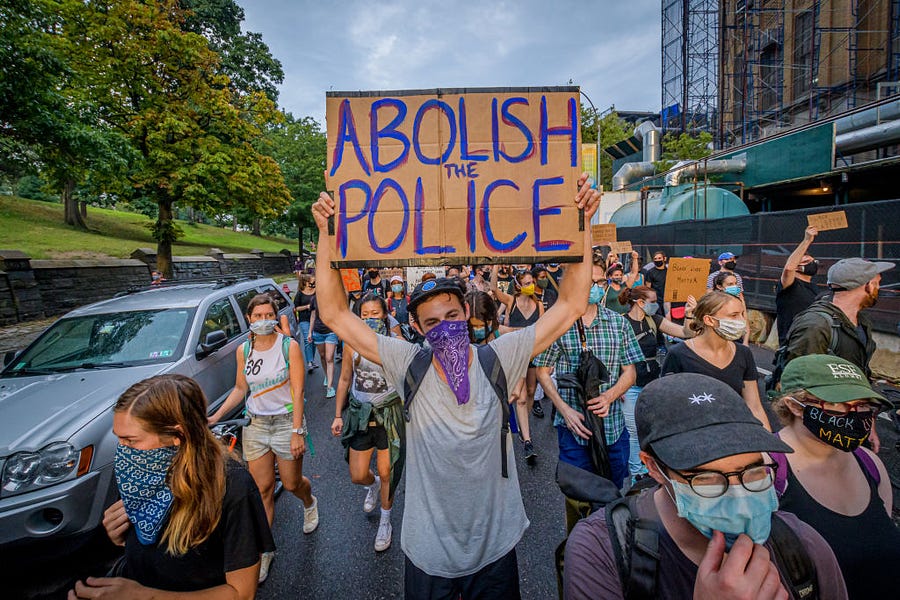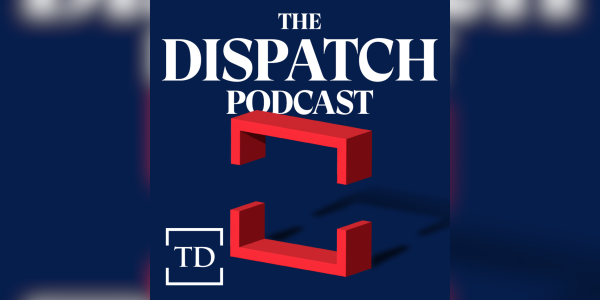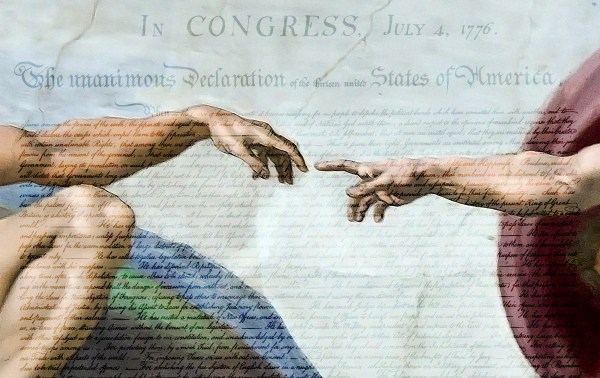Back in 2006, Kevin Drum of Washington Monthly hosted a contest to name the practice of finding a few extremists and treating them as representative of one’s political opponents. The result: “nutpicking.” We’ve all done it, in part because it is so easy. But it is also lazy and logically flawed, a close relative of the straw man fallacy. Arguing against a weak idea that no one actually believes does not make your own idea any more persuasive or true. In the same way, finding a few nuts and extremists and treating them as paradigmatic of everything you disagree with is neither a refutation of your opponent’s best arguments nor an argument in favor of anything in particular.
But is it always wrong to assume the worst of the other side, under any conditions? Some recent studies have tried to reassure us that our political opponents aren’t really as bad as we think. Their numbers are persuasive, but their logic is not. There really is reason to fear that, even if the majority of the other side is reasonable—whichever side we’re talking about—the structural dynamics and incentives of American politics and media give outsized influence to the ideologues, crusaders, and extremists we most fear. Rather than take false comfort that a reasonable majority exists, we should identify what gives the vocal, extreme minority unwarranted power and how to counteract them.
In 2019, a group called More in Common announced striking findings from a study on “The Perception Gap.” Overall, 55 percent of Americans believe their political opponents hold extreme views, but the same poll found that only 30 percent of Americans actually hold such views. For example, Democrats estimated that only 50 percent of Republicans agreed that “properly controlled immigration can be good for America,” but in reality, more than 80 percent of Republicans agreed with the statement. The perception gap held across a range of issues, including racism, Islam, sexism, policing, patriotism, immigration, gun control, and more.
“While Americans do indeed hold different values and disagree on key issues, we underestimate how much more we have in common,” the study concluded. Remarkably, the most politically engaged and highest news consumers showed the largest perception gap: Following the news regularly made people worse judges of their political opponents. The gap matters because each side “make[s] excuses for their own side cheating and breaking the rules to beat the other side. And as our public debates become more hateful, many in the Exhausted Majority tune out altogether.”
Other researchers found a similar result a year later. They polled Americans about their views about their political opponents and found that we routinely overestimate the other side’s ideological purity and extremism. For example, “Conservatives in our sample estimated that 61 percent of liberals—more than twice the actual number—endorsed the abolition of law enforcement,” the lead researcher wrote. “Every movement contains a range of viewpoints, from moderate to extreme. Unfortunately, Americans on each side of the political spectrum believe—incorrectly—that hard-liners dominate the opposite camp.”
Shouldn’t this be good news? On one level, yes: It tells us that most Americans are more reasonable, more moderate, and less polarized than we think. Most of the 81 million Americans who voted for Joe Biden do not want to defund the police, pass the Green New Deal, or declare their pronouns, and they do not believe America was founded in 1619. Most of the 74 million who voted for Donald Trump do not want to halt all immigration, do not deny America’s past historical sins or their present after-effects, and are open to sensible economic and environmental regulation.
So, what’s the problem? The problem is that vocal, powerful minorities within each party really do hold the most extreme views, and those minorities are wildly overrepresented in the media, among pundits, and in party primaries—and from those perches they exert outsized influence over think tanks, party platforms, elected officials, and public policy. They act as watchdogs and gatekeepers, ensuring ideological purity and policing thought-crime. Because they are the most politically engaged and active, they control much of the process by which programs are established, donor dollars are allocated, stories are covered, candidates are selected, arguments are formed, legislation is shaped, and more.
In other words, it is entirely rational for a conservative to nutpick and fear “the left” because, even if a majority of Democratic voters are not extremists, they give their votes to a movement that, at the very least, does not condemn and often platforms and gives influence to its most extreme voices. And the same is true for liberals’ fears of the right.
The more recent study, in fact, highlighted some of this dynamic. “Partisans told us they were hesitant to voice their opinions about the most extreme positions expressed by people on the same side of the spectrum.” The moderate majority are afraid of the extremists on their side; the extremists exert outsized influence because they intimidate the rest of us into silence. “For example, liberals were less keen to talk publicly about the downsides of censoring free speech than they were to talk about the benefits of universal health care,” the researchers found, “So although a majority of liberals opposed censorship, their reluctance to criticize it openly might have led conservatives to think that most on the left favored it.” The problem is exacerbated by the media. “Partisan media outlets have an incentive to stoke their audience’s outrage by making extreme views seem commonplace.”
I recall hearing about a survey on a college campus that showed students generally felt comfortable sharing their views and discussing disagreements with professors, but not with fellow students. Students know that, while most others are reasonable, a small minority hold the most extreme views and are most likely to accuse them of hate speech or of creating a hostile climate for expressing views deemed unacceptable. Imagine the effect that has on professors and administrators. The power of the vocal minority is why cancel culture exists and why it is rational to fear it.
How does the reasonable majority defeat the unreasonable minority? We’ve seen a handful of successful examples in recent years. In late 2020, Trader Joe’s was accused of racism for using labels like “Trader Ming’s” and “Trader José” In response, the company issued a statement that said, “We disagree that any of these labels are racist,” and moved on. They knew the market power of those claiming to be offended was tiny. This year, Netflix not only ignored Dave Chappelle’s critics; they continued with plans for two additional comedy specials and refused to take down his previous shows.” The private sector can respond to the reality of market demand, which is not on the ideologues’ side.
The situation is more complicated in academia, where there is likely a higher proportion of political ideologues with extreme views and, if anything, the market dynamic works in reverse: Universities want to keep the programs that attract such students so as to appear on the cutting edge of social awareness. (This is mostly a problem with left-wing extremism, but I wonder if a similar dynamic may be taking root on the right in places like Hillsdale College or Liberty University.) In such an environment, activist students are extraordinarily powerful.
In 2015, in response to this dynamic, some scholars founded the Heterodox Academy as a nonprofit “committed to enhancing the quality of research and education by promoting open inquiry, viewpoint diversity, and constructive disagreement in institutions of higher learning.” Similarly, in 2021, others founded the Academic Freedom Alliance as a sort of mutual defense treaty for professors. “Our members from across the political spectrum recognize that an attack on academic freedom anywhere is an attack on academic freedom everywhere,” they write.
The common theme among these approaches in the public and private sectors is simple: Face down the bullies. Take confidence from the knowledge that the extremists are outnumbered; that the reasonable majority hates their tactics; and that repeated cases show that, faced with a little push-back, the ideologues cave.
As importantly, it requires that we take note of the dangers on our side of the political spectrum, that we take responsibility for calling out the crazies, nut jobs, and extremists within our ranks. If we don’t, we are tacitly running cover for them, giving them legitimacy in exchange for the rhetorical firepower they train on our opposition. If we wink at our side’s extremism while denouncing the other’s, our denunciations will ring hollow as the protestations of unprincipled hypocrites. We must all be ready for our Sister Souljah Moment.
One more step might help: more data. The recent studies about polarization report numbers about American’s beliefs as a whole, disaggregated by party and a few other categories. I want to see polling numbers on the beliefs and size of the ideological gatekeepers. It may be that, if we can describe exactly how extreme their beliefs are, and how small their numbers are, we will all feel a bit more comfortable recognizing that this emperor has no clothes. For example, the Perceptions Gap study estimated that just 8 percent of Americans were “progressive activists” and 6 percent were “devoted conservatives,” who hold the most outlying views. If that maps onto the sort of vocal-minority phenomenon I’m talking about, and if we see more polling that demonstrates similar results, then maybe, the next time the mob comes demanding conformity to some view that 95 percent of Americans do not hold, we can just face them down with laughter.






Please note that we at The Dispatch hold ourselves, our work, and our commenters to a higher standard than other places on the internet. We welcome comments that foster genuine debate or discussion—including comments critical of us or our work—but responses that include ad hominem attacks on fellow Dispatch members or are intended to stoke fear and anger may be moderated.
With your membership, you only have the ability to comment on The Morning Dispatch articles. Consider upgrading to join the conversation everywhere.